What to do if my Panasonic Telephone Accessories display is in a language I cannot read?
- JJamie HatfieldSep 4, 2025
If the display on your Panasonic Telephone Accessories is in a language you cannot read, change the display language.
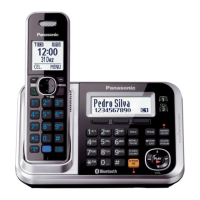
What to do if my Panasonic Telephone Accessories display is in a language I cannot read?
If the display on your Panasonic Telephone Accessories is in a language you cannot read, change the display language.
Why can't I connect a cellular phone to my Panasonic Telephone Accessories base unit?
If you cannot connect a cellular phone to your Panasonic Telephone Accessories base unit, confirm that your cellular phone is turned on and is within the base unit range. If auto connection is on, wireless environment interferences can cause delays, so you can connect to the base unit manually. Ensure that the cellular phone has been paired to the base unit.
Why can't I pair a cellular phone to my Panasonic Telephone Accessories base unit?
If you're having trouble pairing a cellular phone to your Panasonic Telephone Accessories base unit, first confirm that your cellular phone supports the hands-free profile (HFP) specification. Also, ensure that the Bluetooth feature of your cellular phone is turned on. Try turning off and on your cellular phone. If your cellular phone is already connected to another Bluetooth device, turn it off or disconnect it from your cellular phone. Some cellular phones may require you to enter the base unit PIN to pairing, confirm that you entered the correct PIN.
Why does my Panasonic Telephone Accessories handset or base unit not ring?
If your Panasonic Telephone Accessories handset or base unit isn't ringing, check that the ringer volume for landline and cellular line is not turned off. Also check if silent mode is turned on.
How to fix fully charged batteries, but still flashes on Panasonic Telephone Accessories?
If you have fully charged the batteries of your Panasonic Telephone Accessories, but the unit still flashes, clean the battery ends and the charge contacts with a dry cloth and charge again. If the problem persists, it may be time to replace the batteries.
| Type | Cordless Telephone |
|---|---|
| Frequency | 1.9 GHz |
| DECT | Yes |
| Number of Handsets | 1 |
| Answering System | Yes |
| Answering System Recording Time | Up to 18 minutes |
| Caller ID | Yes |
| Call Waiting | Yes |
| Speakerphone | Yes |
| Display Type | LCD |
| Display | 1.8 inch |
| Intercom | Yes |
| Ringer Volume Control | Yes |
| Headset Jack | Yes |
| Power Source | AC Adapter |
| Wall Mountable | Yes |
| Expandable Handsets | Up to 6 |
| Battery Type | Ni-MH |
| Range | Up to 1000 feet outdoors, 160 feet indoors |
| Phonebook Capacity | 100 entries |
Details the different phone models and their base unit and handset parts.
Lists the supplied accessories included with the phone for different unit configurations.
Information on adding optional handsets and Bluetooth devices to expand the phone system's capabilities.
Details on expanding the system with compatible Bluetooth cellular phones and headsets.
Crucial safety precautions to prevent injury and property damage during product use.
Guidance on using the product near medical devices and in healthcare facilities.
Precautions for installing the phone and selecting an appropriate location for optimal function.
Essential safety guidelines for operating the telephone to reduce risks of fire, shock, and injury.
Tips for optimal placement and usage to ensure clear communication and function.
Recommendations for placing the base unit to avoid interference and ensure good reception.
Guidelines for keeping the product in suitable environmental conditions for optimal function.
Instructions for maintaining the product's appearance and function through regular cleaning.
Additional important notes, including battery replacement caution and product disposal.
Recommendations for protecting private information before disposing of or transferring the product.
Lists the technical standards and technologies used by the phone, like DECT 6.0 and Bluetooth.
Specifies the operating frequency ranges for DECT and Bluetooth technologies.
Details the power requirements, including voltage, frequency, and typical power usage.
Outlines the acceptable temperature and humidity ranges for product operation.
Step-by-step guide for initial setup and connecting the phone system components.
Instructions on installing and charging the handset batteries, with important notes.
Information on the operating time of the handset with supplied Ni-MH batteries.
Explains the eco mode feature that reduces power consumption by suppressing transmission power.
Identifies and describes the functions of the buttons and keys on the handset.
Identifies and describes the functions of the buttons and keys on the base unit.
Instructions on how to charge a cellular phone using the base unit's USB port.
Explains the meaning of various icons and indicators displayed on the handset.
Explains the meaning of icons and indicators displayed on the base unit.
Details the status indications for the CELL 1 and CELL 2 indicators on the base unit.
Guide to setting the current date and time on the handset and base unit.
Instructions on how to change the display language between English and Spanish.
Instructions on setting the voice guidance language for the answering system.
Guide to selecting the appropriate dialing mode (Tone or Pulse) for your telephone service.
Overview of the feature allowing calls via cellular lines with better reception and phone battery conservation.
Step-by-step instructions for pairing a Bluetooth-enabled cellular phone to the base unit.
Instructions on how to cancel the pairing of a cellular phone with the base unit.
Configuration options for managing cellular calls and ringtones.
How to choose which handset or base unit rings for cellular line calls.
Option to use the cellular phone's ringer tone for incoming cellular calls.
How the unit automatically reconnects to a cellular phone when it returns to range.
Steps to manually connect or disconnect a paired cellular phone from the base unit.
Setting the unit to use only the cellular line, disabling landline features.
Determines which cellular line is used for making calls when multiple phones are paired.
How to store an area code for automatically dialing local cellular numbers.
Procedure to change the PIN for pairing Bluetooth devices to prevent unauthorized access.
Step-by-step guide to making calls using the cellular line via the handset.
How to adjust the receiver or speaker volume while talking on the handset.
Using the redial list to make cellular calls efficiently.
Instructions for making calls using the landline via the handset.
How to use the speakerphone function for hands-free calls on the handset.
Guide to saving phone numbers and names into the phonebook from the handset.
How to use the pause feature when making calls with PBX or long-distance services.
Steps to answer incoming calls using the handset, including cellular and landline.
How to enable the auto talk feature for answering calls by simply lifting the handset.
How to set or adjust the ringer volume for cellular and landline calls on the handset.
How to temporarily silence the handset ringer during an incoming call.
How to place an outside call on hold and how to release it on the handset.
How to mute the microphone during a conversation on the handset.
Using the flash function for PBX features or optional telephone services.
Using call waiting and Caller ID services to manage incoming calls while already on a line.
Temporarily switching to tone dialing for accessing touch-tone services.
How the clarity booster enhances sound quality in areas with potential interference.
Reducing background noise for clearer conversations on the handset.
Adjusting audio clarity to improve voice intelligibility on the handset.
Joining an existing outside call, allowing for conference calls with multiple parties.
How to transfer a cellular call from the handset to a paired cellular phone.
How to transfer a cellular call from a paired cellular phone to the handset.
Handling a second call (cellular or landline) while already on a call.
How the handset temporarily powers the base unit during a power failure for landline calls.
Steps to make calls using the handset during a power outage, utilizing power back-up.
Using the redial list to make calls during a power failure with the power back-up feature.
How to answer calls using the handset during a power failure with the power back-up feature.
Instructions for making cellular calls using the speakerphone on the base unit.
How to adjust the speaker volume while talking on the base unit.
Using the redial list to make cellular calls from the base unit.
Instructions for making calls using the landline via the base unit.
How to answer incoming landline and cellular calls using the base unit speakerphone.
How to set or adjust the ringer volume for cellular and landline calls on the base unit.
How to place an outside call on hold and release it on the base unit.
How to mute the microphone during a conversation on the base unit.
Using the flash function for PBX features or optional telephone services on the base unit.
Using call waiting and Caller ID services to manage incoming calls on the base unit.
How to transfer a cellular call from the base unit to a paired cellular phone.
Handling a second call while on an existing call using the base unit.
Step-by-step guide to adding new contact entries to the shared phonebook.
Table showing characters assigned to dial keys for entering names.
How to erase individual characters or the entire entry from the phonebook.
Explanation of using groups to organize and search phonebook entries.
Methods for locating and initiating calls to contacts stored in the phonebook.
How to browse through all contacts in the phonebook.
How to find contacts by entering the first letter of their name.
How to search for contacts by typing the first few characters of their name.
How to find contacts by selecting a specific group they belong to.
How to modify existing contact information (name, number, group) in the phonebook.
Procedures for deleting single entries or all entries within a specific group from the phonebook.
Using stored phonebook entries to dial numbers while on an active call, such as for calling cards.
How to assign phone numbers to the speed dial keys (1-9) on the handset.
How to modify the name or number associated with a speed dial key.
How to remove a phone number assignment from a speed dial key.
How to initiate calls using the speed dial feature for cellular or landline lines.
Overview of how to customize unit features through menus or direct codes.
Method for navigating through the unit's menu system to access features.
Method for accessing features directly using specific numerical codes.
Configuration options for the answering system, including greeting, alerts, and recording time.
Settings related to accessing voice mail services provided by the telephone company.
Settings for using the intercom feature to communicate between units.
Configuration for Bluetooth features like Link to Cell, Ringer Volume, and Pairing.
Settings for managing cellular phone connections, including ringer volume and ring as cell mode.
Settings for pairing and connecting a Bluetooth headset to the base unit.
Options for setting the date, time, and alarm functions.
Settings for ringer options, interrupt tones, and silent mode.
How to enable and configure Talking Caller ID for announcing callers.
Configuration for the key detector accessory, including adding and changing names.
Options to block unwanted calls based on phone number or lack of number display.
Accessing the speed dial function for programming or viewing.
How to enable or disable the auto talk feature for answering calls.
Settings related to dialing mode, flash time, and line mode for telephone service.
Enabling call sharing to allow multiple parties to join a call.
Configuring the unit's behavior during a power outage, including auto mode.
Options to change the display and voice prompt languages.
Accessing and viewing phonebook entries on the base unit.
Viewing the list of incoming calls on the base unit.
Setting the screen call option for the answering device on the base unit.
Configuration for Bluetooth functions on the base unit, including Link to Cell and Headset.
Base unit settings for ringer volume, interrupt tone, and silent mode.
Base unit options for blocking calls and setting the first ring behavior.
Adjusting the contrast level of the display screen.
Settings for automatically editing Caller ID numbers.
Changing the display language for the base unit.
How to set and configure the alarm function for daily or one-time use.
Setting a period of time to prevent calls from ringing to avoid disturbances.
Setting the specific hours during which silent mode is active.
Customizing names for each handset for easier identification, especially for intercom calls.
Feature to reject calls based on stored numbers or lack of caller ID.
How to add phone numbers to the call block list to reject future calls.
Setting the unit to reject calls where the phone number is not provided.
Configuring whether the unit rings once before blocking a number on the call block list.
How to manage numbers in the call block list, including viewing, editing, and erasing.
Procedure to register an additional handset to the base unit if it's not already paired.
How to remove a handset's registration from the base unit.
Overview of Caller ID compatibility and subscription requirements.
Displays caller information, logs recent calls, and shows special call types.
How missed calls are indicated and how the indication disappears after certain operations.
How stored names from the phonebook are displayed for incoming calls.
Feature that announces the caller's name or number during incoming calls.
Assigning specific ringer tones to groups of contacts in the phonebook.
Important notes about accessing the caller list and ensuring correct date/time settings.
How to view the list of incoming calls and make a call back from the handset or base unit.
How to edit a phone number in the caller list before making a return call.
Feature that automatically formats caller numbers based on previously edited numbers.
How to delete specific entries from the caller list.
How to clear the entire caller list.
How to save incoming call information directly into the phonebook.
How to copy contact entries from a cellular phone to the unit's shared phonebook.
Setting international, country, and national access codes for phonebook transfer.
Notifies the user of new text messages received on a paired cellular phone.
Using an optional Bluetooth headset for wireless hands-free conversations on landline calls.
Step-by-step guide to pair a Bluetooth headset with the base unit for use.
How to connect or disconnect a paired headset from the base unit.
How to cancel the pairing of a headset from the base unit.
How to use the Bluetooth headset for answering and operating landline calls.
Allowing a headset to join a call in progress with the handset or vice-versa.
How to adjust the volume of the headset receiver.
Explains the answering system's function to answer and record calls when unavailable.
Details the total recording time and maximum number of messages that can be stored.
How to activate or deactivate the answering system using the base unit or handset.
Allows listening to callers leave messages without answering the call directly.
Options for using a pre-recorded or custom greeting message for callers.
Instructions for recording your own personalized greeting message for callers.
Information on using the unit's built-in greeting messages.
How to revert to using a pre-recorded greeting after recording a custom one.
How to listen to the currently set greeting message.
How to access and play recorded messages using the base unit.
Controls available during message playback, such as repeat, skip, pause, and erase.
How to call back a caller while listening to their message, if Caller ID information is available.
How to delete all recorded messages from the answering system.
How to access and play recorded messages using the handset.
Summary of keys and their functions for operating the answering system.
How to edit a caller's phone number before initiating a call back from a message.
Setting the base unit to beep to notify of new messages when the audible alert is on.
Feature to automatically call a stored number to announce new messages.
How to store a phone number for the unit to call when a new message arrives.
Enabling or disabling the feature that alerts you of new messages via a call.
How to remove the phone number stored for new message alert calls.
Setting whether a remote access code is required to play messages remotely.
How to access messages and settings remotely using a touch-tone phone.
Setting a code to prevent unauthorized remote access to messages and settings.
Information on voice guidance prompts during remote operation in English or Spanish.
List of dial keys used to access answering system functions remotely without voice prompts.
How to turn the answering system on remotely if it is currently off.
Configuration options for the answering system, including the number of rings before answering.
Notes for users subscribing to a voice mail service from their provider.
Setting the maximum recording time allowed for each caller's message.
Setting the unit to play a greeting but not record messages, or record only greetings.
How to store the voice mail access number for automatic dialing.
How to remove the stored voice mail access number.
How the unit detects special tones indicating new voice mail messages.
Enabling or disabling the detection of voice mail tones.
How to listen to new voice mail messages using the handset or base unit.
How to make and answer intercom calls between handsets and the base unit.
How to page a misplaced handset to find it.
How to transfer calls or set up conference calls with outside parties.
Instructions on how to mount the base unit on a wall using the provided adaptor.
Detailed steps for removing, orienting, and attaching the wall mounting adaptor to the base unit.
Lists common display messages and their corresponding causes and solutions.
General steps to resolve issues if problems persist after checking error messages.
Resolving common issues like handset not turning on or the unit not working.
Resolving issues with cellular phone connection, dial tone, and base unit beeps.
Solutions for problems related to display language and handset registration limits.
Addressing issues with low battery indicators and battery charging.
Resolving issues related to call making, intercom, noise, and ringers.
Resolving problems with Caller ID display, announcement, and talking Caller ID features.
Resolving issues with phonebook transfer, headset use, and noise during calls.
Resolving issues with headset connection and text message alert announcements.
Resolving problems with message recording, remote operation, and ring count settings.
Steps to take if the Bluetooth PIN is forgotten or needs to be changed.
Instructions and cautions for dealing with liquid damage to the handset or base unit.
Regulatory compliance information, including FCC rules, REN, and hearing aid compatibility.
Information on the TIA-1083 standard related to hearing aid compatibility.
Directory for obtaining product information, support, and purchasing parts/accessories.
Information on purchasing accessories and instruction books online or via mail.
Details of the limited warranty coverage, terms, and conditions for the product.
Specifies what is covered and not covered by the limited warranty, including exclusions.
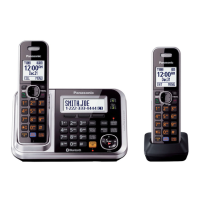

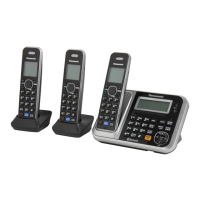

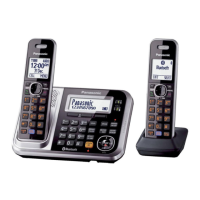
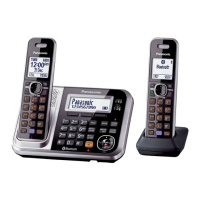
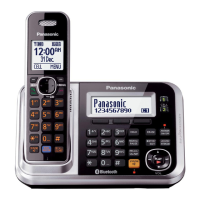
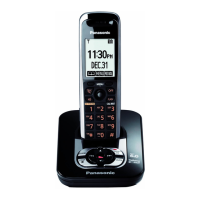



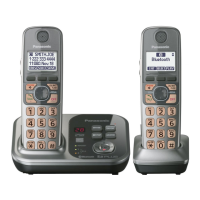
